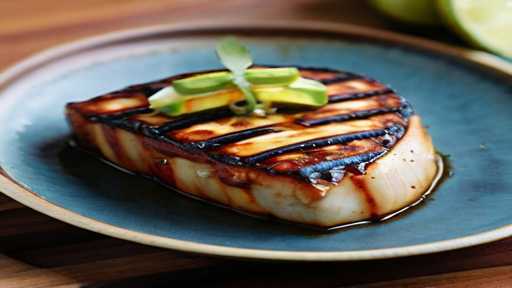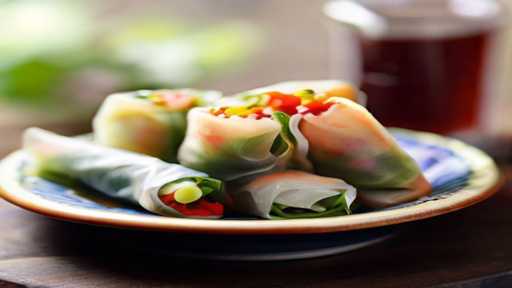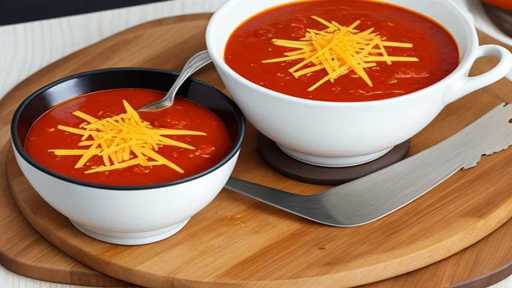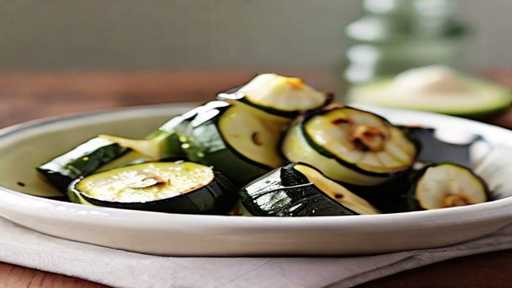Vegetarian homemade falafel Recipe with tahini sauce
Homemade Falafel is a popular Middle Eastern dish that has its origins in ancient Egypt. Made from chickpea and fava bean flour, herbs and spices, these fragrant, chewy balls offer a delicious combination of tradition and culinary innovation and are a worldwide favorite.
homemade falafel
Egyptian
Approximately 1 hour
Medium
Ingredients for Homemade Falafel:
- For Falafel Patties:
- 1. 2 cups dried chickpeas, soaked overnight
- 2. 1 small onion, coarsely chopped
- 3. 3 cloves of garlic (chopped)
- 4. Fresh parsley (chopped) 1 cup
- 5. Cumin powder 1 teaspoon
- 6. Coriander powder 1 teaspoon
- 7. Baking powder 1/2 teaspoon
- 8. 1 tablespoon all-purpose flour or chickpea flour (if gluten-free)
- 9. Salt and pepper to taste
- 10. Vegetable oil for frying
- Substitute fresh parsley with coriander or a combination of both.
- For the tahini sauce:
- 1. 1/2 cup tahini paste
- 2. 2 tablespoons lemon juice
- 3. 2 tablespoons water
- 4. 1 clove minced garlic
- 5. Salt to taste
- Substitute for tahini paste: If unavailable, you can use yogurt or a mixture of peanut butter and sesame oil.
- For serving:
- 1. Flatbread or pita bread
- 2. Tomato slices
- 3. Cucumber slices
- 4. Grated lettuce
- 5. Red onion slices
- 6. Pickled Cucumbers
Instructions: Homemade Falafel
- 1. Preparation: A. Place the dried chickpeas in a large bowl and cover with cold water. Let it soak overnight. The size will be doubled. B. Drain the soaked chickpeas and place them in a food processor. C. Add the chopped onion, garlic, parsley, flour, salt, cumin, coriander, black pepper, and cayenne pepper to the food processor.
- 2. Mixture: Chop the ingredients until you have a coarse meal. Scrape the sides of the processor if necessary. B. Continue to pulse until the mixture becomes a coarse paste. Be careful not to overprocess. It needs texture.
- 3. Break: Place falafel mixture in a bowl, cover, and refrigerate for at least 1 hour. This will make the mixture firmer and easier to form into balls.
- 4. Shaping: Once cool, preheat the oven to 190°C (375°F). B. Scoop a tablespoon of the mixture and form into balls or patties. Place on a baking sheet.
- 5. Baking option: Brush the falafel with olive oil and bake in the preheated oven until golden brown, 25 to 30 minutes, turning halfway through.
- 6. Roast: Heat vegetable oil in a deep pot to 175°C. B. Fry the falafel in batches until golden brown, about 3 to 4 minutes per side. Using a slotted spoon, remove them and put them on a dish covered with paper towels.
- 7. Tahini sauce: Combine tahini, lemon juice, water, olive oil, minced garlic, and salt in a bowl and stir until smooth.
- 8. Serve: Serve warm falafel with tahini sauce, pita bread, and your favorite vegetables.
Key points: Homemade Falafel
- • Make sure the chickpeas are well soaked to ensure a smooth texture.
- • Do not skip the cooling step. It helps keep the falafel shape while cooking.
- • Maintain the oil temperature when frying to make crispy falafel.
- • Adjust the amount of spices to your taste.
Here is a list of kitchen tools and equipment needed to make Homemade falafel:
- 1. Food Processor:
- • Used to finely chop and mix ingredients such as chickpeas, herbs, and spices. To do.
- 2. Cutting board:
- – For chopping and preparing ingredients such as onions, garlic, and herbs.
- 3. Knife:
- • A sharp knife for cutting vegetables and herbs.
- 4. Mixing bowl:
- • Mix falafel ingredients thoroughly.
- 5. Can Opener:
- • If you are using canned chickpeas, you will need a can opener to open the can of chickpeas.
- 6. Sieve:
- • For draining and rinsing canned chickpeas.
- 7. Baking tray:
- • For baking falafel in the oven.
- 8. Parchment paper:
- • Line the baking tray to prevent falafel from sticking.
- 9. Measuring Cups and Spoons:
- • Accurately measure ingredients such as flour, spices, and baking powder.
- 10. Pot or frying pan:
- • If you want to fry food, you need a pot or frying pan with enough oil for frying.
- 11. Slotted Spoon:
- • Used to remove falafel from hot oil when frying.
- 12. Thermometer:
- • When frying, use a thermometer to check the temperature of the oil.
- 13. Spatula:
- • Used to flip falafel during cooking.
- 14. Paper Towel:
- • Used to drain excess oil from falafel after frying.
- 15. Garlic Press:
- • If you want to use fresh garlic in your falafel mix.
- 16. Lemon Squeezer:
- • Used to extract fresh lemon juice to enhance the flavor of falafel.
- 17. Tahini or yogurt sauce (optional):
- • If you want to serve your falafel with a dipping sauce.
- 18. Plates and serving dishes:
- • For serving falafel.
Here are combination ideas for Homemade falafel.

- 1. Tahini sauce and flatbread: a classic combination. The creamy tahini sauce complements the crunch of the falafel and flatbread, making it the perfect grab-and-go meal.
- 2. Greek Salad: The freshness of tomatoes, cucumbers, feta and olives give falafel a lively, refreshing touch.
- 3. Hummus and Carrot Sticks: Dip falafel in hummus and pair with crunchy carrot sticks for a hearty and healthy snack.
- 4. Yogurt Mint Sauce and Basmati Rice: The refreshing taste of yogurt and mint enhances the flavor of falafel, and pairs with fragrant basmati rice for a healthy meal.
- 5. Tabbouleh Salad: The tangy flavors of tabbouleh’s parsley, tomatoes, and bulgur complement the earthy flavors of falafel.
- 6. Cucumber Yogurt Dip and Naan: A refreshing cucumber and yogurt dip and soft naan are a delicious combination.
- 7. Pickled beets and radish: Tangy and crunchy pickled beets and radish add flavor to the falafel.
- 8. Mango Salsa: Fruity and spicy, mango salsa gives falafel a tropical feel and balances the flavors.
- 9. Roasted Red Pepper Hummus with Whole Grain Crackers: A delicious and healthy option that combines the smoky flavor of roasted red pepper hummus with whole grain crackers.
- 10. Cilantro-lime rice: Serve falafel with cilantro-lime rice as a lemon and herb flavored side dish.
- 11. Spicy Garlic Sauce and Flatbread: For those who like something a little more spicy, the combination of spicy garlic sauce and soft flatbread enriches the falafel experience.
- 12. Avocado Tzatziki: Mix creamy avocado with traditional tzatziki to create a rich and flavorful dip for falafel.
- 13. Mediterranean Couscous Salad: The light and fluffy texture of couscous and Mediterranean flavor complement the hearty falafel.
- 14. Pomegranate Molasses Spritzer: A splash of sweet and tangy pomegranate molasses adds a unique twist to falafel.
- 15. Garlic Aioli and Fries: Enjoy a classic combination by pairing falafel with crunchy fries and garlic aioli dipping sauce.
- 16. Sesame Ginger Dressing and Mixed Vegetables: Pair falafel with sesame ginger dressing and mixed vegetables for a refreshing salad option.
- 17. Sun-dried Tomato Pesto and Quinoa: The combination of intense sun-dried tomato pesto and fluffy quinoa creates a hearty and flavorful dish.
- 18. Chickpea fries with curry ketchup: Expand your chickpea options by serving your falafel with chickpea fries and a curry ketchup dip.
- 19. Harissa mayo and roasted vegetables: The spiciness of the harissa mayo pairs well with the sweetness of the roasted vegetables and falafel.
- 20. Feta and Olive Tapenade: Sprinkle crumbled feta over falafel and top with tangy olive tapenade for a Mediterranean-inspired treat.
Tips for cooking Homemade falafel:
- 1. Use dried chickpeas: Choose dried chickpeas instead of canned chickpeas. To improve the texture of the falafel, soak it overnight. If you use canned chickpeas, the mixture may be too wet.
- 2. Balanced Spices: Achieve balanced flavors by adjusting the balance of spices. Mix in cumin, coriander, and a little cayenne pepper for a harmonious flavor. Adjust the amount of spices to your liking.
- 3. Fresh Herbs: Add fresh herbs such as parsley and coriander to add freshness. Finely slice them and add to the falafel mixture just before forming the patties.
- 4. Texture matters: Don’t overprocess the chickpea mixture. Pulse in a food processor until coarse and granular and no longer a smooth paste. This will ensure a good consistency of the falafel.
- 5. Baking options: If you’re looking for a healthier alternative, try baking your falafel instead of frying it. Preheat the oven, brush the patties with a little oil and fry until golden brown.
- 6. Refrigerate before frying: Refrigerate formed falafel patties for at least 30 minutes before frying. This will help it hold its shape and prevent it from falling apart in the hot oil.
- 7. Test a small batch: Test small falafel patties before frying or baking the entire batch. This allows you to adjust seasonings as needed before tackling the entire batch.
- 8. Hot oil: When frying, make sure the oil is hot enough before adding the falafel. A temperature of approximately 175 °C is ideal. If the oil is too cold, the falafel may absorb too much oil and become soggy.
- 9. Drain excess oil. After frying, place the falafel on a paper towel to absorb excess oil. This will keep it crispy without making it oily.
- 10. Dipping sauces: Serve falafel with a variety of dipping sauces, including tahini, tzatziki, and yogurt-based sauces. These not only enhance the taste but also cater to different taste preferences. Adaptations to Preferences and Dietary Restrictions:
- • Gluten-Free: Make sure your falafel is gluten-free by using gluten-free breadcrumbs or omitting it entirely. Make sure other ingredients like spices and baking powder are gluten-free.
- • Vegetarian/Vegan: Falafel is naturally vegetarian and vegan. Make sure the side dishes and sauces match your meal preferences as well.
- • Low Sodium: Manage sodium levels by reducing salt or choosing low-sodium canned chickpeas. Emphasize the use of fresh herbs and spices for flavor.
- • Allergies: Adjust recipes to accommodate allergies. For example, if someone has a nut allergy, exclude any nuts that may be part of the side dish or sauce.
Suggestions for serving Homemade falafel:
- 1. To serve: Arrange homemade falafel on a platter lined with fresh, sturdy lettuce leaves or mixed greens. Arrange the falafel patties in a visually appealing pattern to highlight their golden color. Consider forming a circle or column for an organized and attractive presentation.
- 2. Accompanying sauces: Place small bowls or ramekins with different sauces around the falafel plate. The traditional options are:
- • Tahini sauce: A classic sauce with a creamy texture and nutty flavor.
- • Yogurt-based sauces: Mix natural yogurt with chopped garlic, lemon juice, and a pinch of salt for a refreshing sauce.
- • Hot sauce or harissa: If you like it a little spicy, you should choose the spicy version.
- 3. Fresh garnishes: Sprinkle chopped fresh herbs like parsley or cilantro over the falafel for a pop of color and extra freshness. Thinly sliced daikon radish, cucumber, and cherry tomatoes can also be used as colorful side dishes.
- 4. Flatbread or Flatbread: Serve warm flatbread or flatbread as a side dish. These can be used to make falafel wraps or to hold falafel and accompanying sauces. A preheated pan completes the whole experience.
- 5. Pickled vegetables: Consider serving pickled vegetables, such as beets or cucumbers, as a side dish to add flavor and crunch to your meal. Pickles can be served in a separate bowl or arranged around the falafel.
- 6. Hummus Dip: Serve smooth and creamy hummus in a bowl. This classic Middle Eastern dip complements rich, flavorful falafel.
- 7. Lemon wedges: Place lemon wedges on the side so guests can squeeze fresh lemon juice onto the falafel to add lemon flavor.
- 8. Feta Cheese Crumble (Optional): Sprinkle crumbled feta cheese over the falafel for extra flavor. This creates a creamy, salty ingredient that pairs well with the falafel’s spices.
Storing and Leftover Homemade Falafel:
Here are some easy steps to store and reheat Homemade falafel:

How to Store:
- 1. Refrigerate: Store leftover falafel in an airtight container in the refrigerator. please. Falafel can be stored for 2-3 days.
- 2. Freezing: If you want to extend the shelf life, consider freezing your falafel. Place on a baking sheet in a single layer, then freeze until solid. Once frozen, place it in a freezer safe bag or container. Frozen falafel can be stored for 1 to 2 months.
- 3. Separate: Place a layer of parchment paper between each falafel if storing in the refrigerator or freezer to prevent sticking.
Reheat: Homemade Falafel
- 1. Oven or Toaster:
- • Preheat oven or toaster to 350°F (175°C).
- • Place the falafel on a baking sheet.
- • Cook for 10 to 15 minutes or until heated through, turning halfway through to heat evenly.
- 2. Microwave:
- • You can quickly reheat food using the microwave.
- • Place falafel on a microwave-safe plate.
- • Cook over medium heat for 1 to 2 minutes, checking on the heat and turning over halfway through.
- 3. Air Fryer:
- • Preheat air fryer to 375°F (190°C).
- • Arrange the falafel in a single layer in the air fryer basket.
- • Air fry for 5-8 minutes until cooked through and crispy.
- 4. Stovetop:
- • Heat a nonstick saucepan over medium heat.
- • Add a little oil or cooking spray.
- • Fry the falafel for 2-3 minutes on each side until cooked through and crispy.
- Note: When heating the falafel, be careful not to overcook it. Too much heat may cause it to dry out. Please adjust the heating time while watching the situation.
The approximate nutritional breakdown of Homemade Falafel per serving is as follows:
- Homemade Falafel (per serving):
- • Calories: Approximately 200-250 calories
- • Fat: Approximately 10-15 grams
- • Saturated Fat: 1-2 grams
- •Unsaturated fat: 8-12 grams (mainly from the use of edible oils)
- • Protein: approximately 8-12 grams
- • Carbohydrates: approximately 20-25 grams
- • Fiber: 4-6 Grams
- • Carbohydrates: 2-3 grams (natural sugars found in ingredients such as chickpeas)
- • Sodium: 300-400 milligrams (depending on seasonings and salt content)
- Note: These values are approximate. May vary depending on specific ingredients and cooking method.
Variations: Homemade Falafel

- 1. Spinach Feta Falafel:
- • Add chopped spinach and crumbled feta cheese to the falafel mixture for extra flavor. The spinach gives it a subtle earthy flavor, and the feta gives it a spicy kick.
- 2. Sweet Potato Falafel:
- • Add mashed potatoes to the falafel mixture to create a slightly sweet and creamy consistency. This variation not only enhances the taste but also provides extra nutrients.
- 3. Quinoa Falafel:
- • Stir cooked quinoa into the falafel mixture to add a nutty flavor and increase protein content. Quinoa also gives falafel a pleasant texture.
- 4. Herbed Falafel:
- • Add a variety of finely chopped fresh herbs, such as coriander, parsley, and mint, to the falafel mixture to enhance freshness. This adds a lively, herbal flavor to the dish.
- 5. Beet Falafel:
- • Add grated beets to the falafel mixture for striking color and a hint of sweetness. Besides their visual appeal, beets also provide additional nutrients.
- 6. Falafel with Hummus:
- • Make pockets in falafel balls and fill with small spoonfuls of your favorite hummus before frying. This adds a creamy touch to every bite.
- 7. Nutty Falafel with Almonds:
- • Add finely chopped almonds or almond flour to the falafel mixture to add a delicious crunch and subtle nutty flavor.
- 8. Falafel Seasoned with Cumin and Coriander:
- • Add ground cumin and coriander to enhance the traditional seasoning. These spices complement the chickpeas and add depth of flavor.
- 9. Sesame Coated Falafel:
- • Falafel balls are rolled in sesame seeds and then fried for a crispy outside and a rich nutty flavor.
- 10. Falafel with Sun-dried Tomatoes:
- • Mix in finely chopped sun-dried tomatoes for a sweet and tangy flavor. Tomatoes add a unique twist to the classic falafel flavor.
- 11. Mushroom Garlic Falafel:
- • Add the sautéed mushrooms and minced garlic to the falafel mixture. Mushrooms add depth of umami, and garlic gives falafel a bold flavor.
- 12. Citrus Zest Falafel:
- • Add citrus zest, such as lemon or orange, to the falafel mixture to brighten the flavor. Citrus notes add a refreshing, tangy touch to every sip.
- 13. Greek Falafel:
- • Give your falafel a Mediterranean twist by adding chopped kalamata olives, crumbled feta cheese, and a pinch of dried oregano. Serve with tzatziki sauce for an authentic flavor.
- 14. Pumpkin Seed Falafel:
- • Mix crushed pumpkin seeds into the falafel mixture for a subtle nutty flavor and delicious crunch. This variation gives traditional falafel an interesting texture.
- 15. Curry Spice Falafel:
- • Add curry powder, turmeric, and a little cayenne pepper to the falafel mixture for a fragrant, slightly spicy flavor. This variation pairs well with yogurt-based sauces.
- 16. Falafel with Pesto:
- • Mix a little homemade pesto into the falafel mixture to infuse the rich flavor of basil, garlic, and pine nuts. This gives falafel a Mediterranean touch.
- 17. Cilantro Lime Falafel:
- • Add chopped cilantro and lime juice to the falafel mixture for a fresh, citrusy flavor. This variation is perfect for those who prefer bright, vibrant flavors.
- 18. Black Bean Falafel:
- • Replacing some of the chickpeas with black beans makes falafel hearty and a little different. Black beans give the dish a special flavor and color.
- 19. Buffalo Cauliflower Falafel:
- • Add roasted cauliflower florets to buffalo sauce and mix into falafel mixture. This variation gives falafel a spicy, spicy touch.
- 20. Dill and Cucumber Falafel:
- • Mix finely chopped dill and diced cucumber to create falafel with a hint of dill pickle flavor. Enjoy the perfect taste when served with dill yogurt sauce.
Recipe Notes: Homemade Falafel

- • Cultural Insights: Falafel is a Middle Eastern dish with a rich history that is often associated with street food. It is a versatile dish that is popular in many countries and can be served as a sandwich, wrap, or part of a mezze platter.
- • Health Tip: Baking falafel is a healthier alternative to frying. Preheat the oven to 190°C (375°F) and bake for 20-25 minutes, turning halfway through.
- • A personal touch: experiment with herbs and spices to suit your taste. Some people prefer spicy flavors, while others prefer milder flavors.
FAQ: Homemade Falafel
FAQ 1: How do I make homemade falafel?
Q1: What ingredients do I need to make homemade falafel?
A: To make homemade falafel, I need the following ingredients:
- 1 cup dried chickpeas (soaked overnight)
- 1/2 onion, coarsely chopped (about 1 cup)
- 2 tablespoons chopped fresh parsley
- 2 tablespoons finely chopped fresh cilantro
- 1 teaspoon salt
- 1/2 teaspoon or more dried chili peppers 1 tablespoon
- 4 garlic cloves
- Cumin 1 teaspoon
- Baking powder 1 teaspoon
- Flour 4-6 tablespoons
- Soybean oil or vegetable oil for frying
Q2: Can I use canned chickpeas in homemade falafel?
A: For the best consistency, we recommend using dried chickpeas that have been soaked overnight. Using canned chickpeas can make the mixture too wet and affect the consistency of the falafel. If you’re in a hurry, you can also use canned chickpeas. However, drain the chickpeas and pat dry before using.
Q3: How do I fry falafel?
A: Heat oil in a deep pot to 175°C. Form balls or patties from the falafel mixture and fry until golden brown, about 3 to 5 minutes. Drain on paper towels and serve.
FAQ 2: Can I make homemade falafel gluten-free?
F1: Can I make gluten-free falafel?
A: Yes, you can replace regular flour with gluten-free flour such as chickpea flour or rice flour. You can make gluten-free falafel by substituting . Enjoy delicious gluten-free falafel by making sure all other ingredients are also gluten-free.
Q2: Can I bake the falafel instead of frying it?
A: Of course! For a healthier option, you can also bake the falafel. Preheat the oven to 190°C (375°F), form the falafel mixture into patties or balls, place on a baking sheet and bake for about 20-25 minutes or until golden brown, turning after half the time. Masu.
Q3: Can homemade falafel be frozen?
A: Yes, homemade falafel can be frozen for later use. After frying or baking, allow to cool completely, then freeze in a single layer and transfer to an airtight container or freezer bag. To reheat, bake in the oven until cooked through.
In summary, making homemade falafel is a delicious culinary adventure. This recipe combines chickpeas, herbs, and spices to create a crunchy, flavorful taste. Experience the joy of making these golden nuggets and embark on a delicious journey that will stimulate your taste buds.






